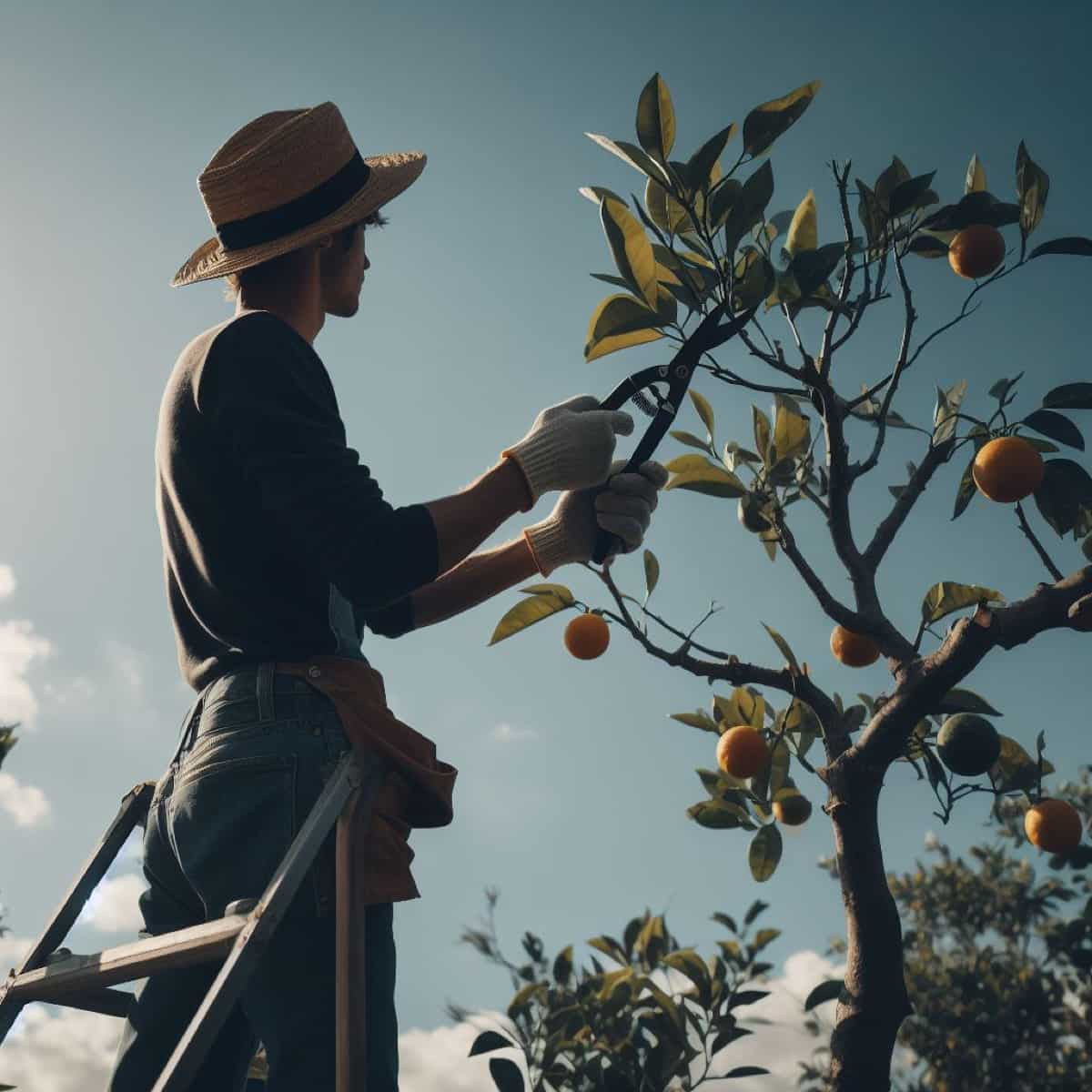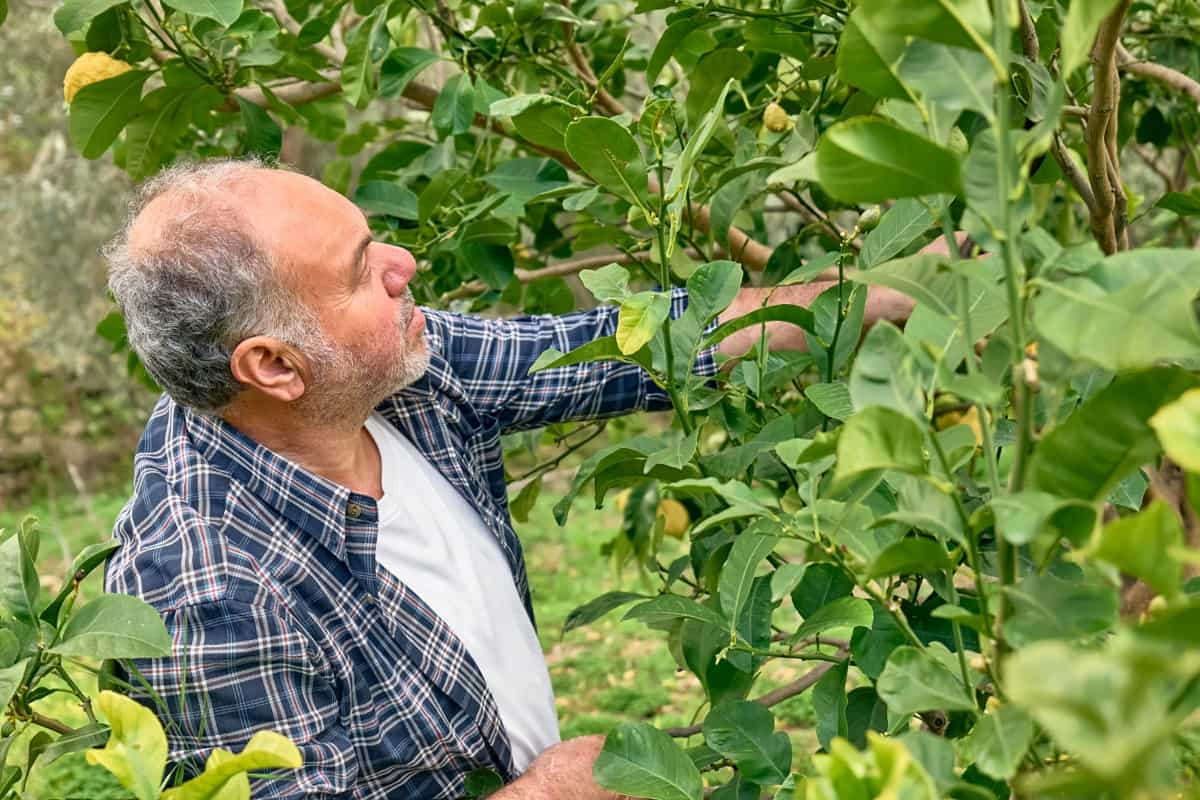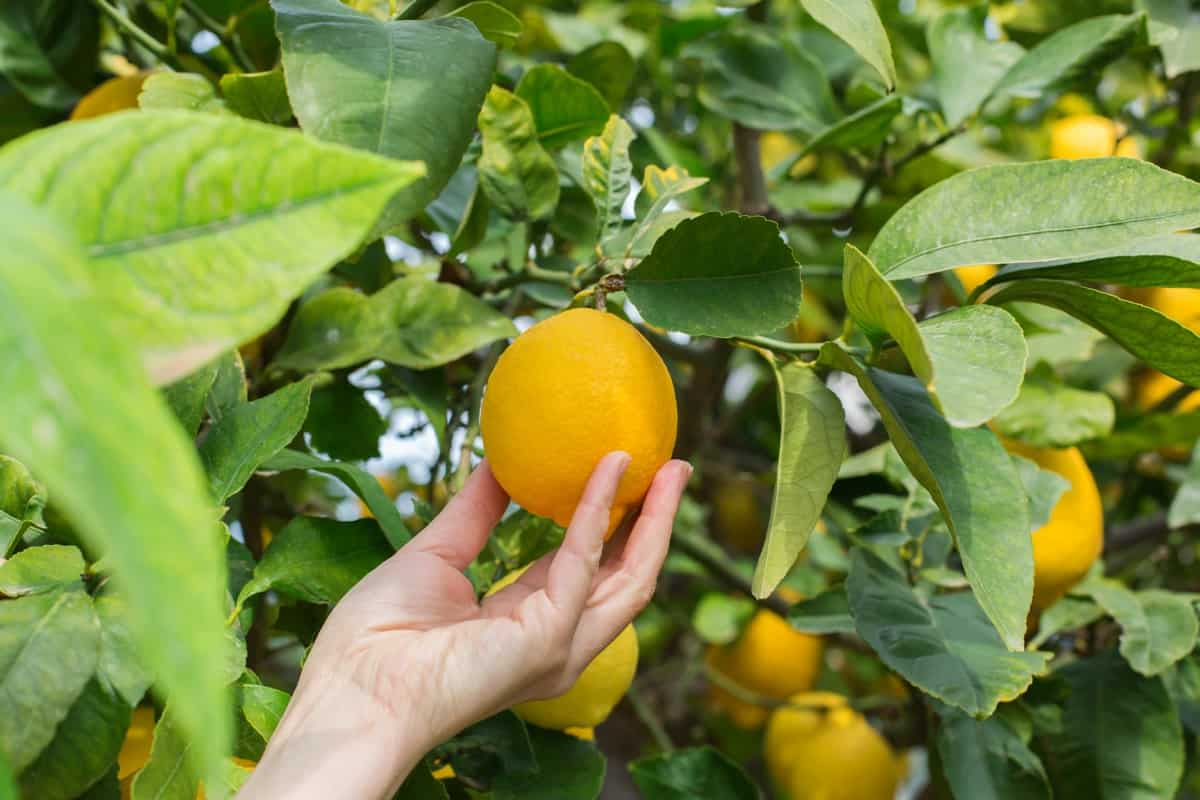Pruning citrus trees is crucial for maintaining their health and maximizing fruit production. This article outlines how to prune citrus trees in 10 easy steps, incorporating important citrus tree pruning principles and practices. Whether working with a young citrus tree or dealing with hard-pruning trees, this guide will prove invaluable. Learn also about training and pruning in citrus, pruning citrus trees in pots, and how to prune a mandarin tree.

How to Prune Citrus Trees in 10 Easy Steps
Understanding the Basics of Citrus Tree Pruning
Learning the basics of citrus tree pruning is essential to ensure you follow the right procedures for optimal growth and fruit production. Pruning is critical for removing dead or diseased branches, shaping the tree, and enhancing air circulation and sunlight penetration, crucial for healthy growth.
You must understand when and how to prune, as different seasons and techniques may impact the tree’s development and yield. If you’re dealing with young trees, learning how to prune a young citrus tree is vital to promote strong, healthy growth patterns from the beginning.
Step-by-Step Guide to Pruning Citrus Trees
Here’s a simple step-by-step guide on pruning citrus trees in 10 steps to make the process easy and effective. Start by choosing the best time, ideally in the spring or early summer when the tree isn’t growing much. Second, choose and sharpen the necessary tools, like pruners and loppers, ensuring they are clean and rust-free. Third, assess the tree’s health and decide which branches need removal. Fourth, start by removing dead or diseased branches. Fifth, cut back overgrown branches to shape the tree and enhance sunlight penetration.
Sixth, make clean cuts, avoiding tearing or damaging the remaining branches. Seventh, consider the tree’s age, as young trees require softer handling. Eighth, for trees in containers, understand the specifics of pruning citrus trees in pots, as they might need different care. Ninth, practice hard pruning citrus trees only when necessary, cautiously removing significant portions of the tree. Finally, dispose of the cut branches properly, avoiding spreading disease.
Essential Tools for Pruning Citrus Trees
Using the right tools for pruning is crucial to prevent damage to your citrus trees. Sharp and clean hand pruners are ideal for cutting smaller branches and twigs. Loppers can handle thicker branches, providing the leverage needed for clean cuts. A pruning saw is necessary for even larger branches. Ensure all tools are clean and sharp to make precise cuts, reducing the risk of infection and disease in the trees. A durable pair of gardening gloves can also protect your hands during pruning.
In case you missed it: Benefits of Citrus Fruit Peels in the Garden: Composting Citrus Fruit Peels

Assessing the Health and Condition of Your Citrus Tree
Before beginning the pruning process, assessing your citrus tree’s health and condition is essential. Look for signs of disease, pest infestations, or nutritional deficiencies, as these issues might influence how you approach pruning. Pay close attention to the tree’s overall structure, identifying weak or damaged branches that require removal. Recognizing these aspects early will guide your pruning process, facilitating a healthier and more productive citrus tree in the long run.
Removing Dead or Diseased Branches from Your Citrus Tree
The first and most crucial step in the pruning process is removing dead or diseased branches from your citrus tree. These branches can drain energy from the tree, spread disease, and hinder the growth of healthy branches. Make clean and sharp cuts, minimizing stress and damage to the tree. Remove any branches that appear dry, brittle, or discolored, as these are signs of disease or death. Disposing these branches properly is also vital to prevent the spreading of any disease or pests they may carry.
Shaping and Controlling the Size of Your Citrus Tree
Shaping and controlling the size of your citrus tree keeps it aesthetically pleasing and promotes a balanced and healthy growth pattern. Begin by identifying the central leader or main branch of the tree. This will act as your reference point. Then, trim any competing branches that might steal resources from the central leader.
To control the size, especially when pruning citrus trees in pots or restricted areas, trim the longest branches back to the desired height or width. Remember, consistent and thoughtful shaping over the years will prevent the need for hard pruning citrus trees, which can be more stressful for the plant.
Promoting Air Circulation and Sunlight Penetration in Your Citrus Tree
One of the primary objectives of pruning is to ensure good air circulation and sunlight penetration, both of which are vital for a healthy citrus tree. A densely packed canopy can harbor pests and diseases due to stagnant air and reduced sunlight. Start by thinning out overcrowded branches in the tree’s interior. Removing some of the inner foliage and non-essential branches will enhance airflow and allow sunlight to reach the deeper sections of the tree. This process deters pest infestations, fosters better fruit development, and reduces fungal issues.
In case you missed it: How to Get Rid of Leaf Miners on Citrus Trees: Naturally, Organically, and Chemically

Pruning for Fruit Production in Citrus Trees
Pruning plays a pivotal role in fruit production for citrus trees. To optimize fruit yield, remove any suckers or water sprouts that shoot up from the tree’s base or the main branches, as they divert energy from fruit production. Additionally, pruning the tips of the branches can stimulate growth and result in a more extensive branching system, offering more sites for fruit development. Maintain a balanced canopy by regularly removing branches that cross each other or grow inward. Remember, a well-pruned tree channels its energy efficiently towards fruit production rather than excessive vegetative growth.
Timing and Frequency of Pruning Citrus Trees
The timing and frequency of pruning can dramatically influence the health and productivity of citrus trees. Generally, late winter to early spring is the ideal time for pruning, just before the new growth begins. This period ensures wounds heal quickly, making trees less susceptible to pest infestations or diseases. However, minor pruning can be done year-round. Young citrus trees should be pruned lightly to train them, while established trees might only need pruning once every one or two years. Always be cautious and avoid over-pruning, which can stress the tree and reduce fruit production.
Aftercare and Maintenance Tips for Pruned Citrus Trees
After pruning, your care and attention to your citrus tree can make a significant difference in its recovery and growth. Firstly, ensure that you clean up and dispose of all pruned materials to prevent the spread of pests or diseases. Water the tree adequately after pruning to help it cope with the shock.
In case you missed it: Bacterial Citrus Diseases: Identification and Control

You might also consider applying a balanced fertilizer to support new growth but avoid high-nitrogen fertilizers, which can promote excessive leafy growth at the expense of fruit. Regularly inspect the pruned areas for any signs of disease or pest activity. Your pruned citrus tree will thrive and produce abundantly with attentive aftercare and maintenance.
Conclusion
Pruning is essential to ensure citrus trees’ health, growth, and productivity. Your tree will thrive with the right techniques and aftercare, offering bountiful fruit and robust growth.
- Feed Your Flock for Less: Top 10 Tips to Save on Chicken Feed
- Ultimate Guide to Ossabaw Island Hog: Breeding, Raising, Diet, and Care
- Hatching Answers: The Top 10 Reasons Your Chickens Aren’t Laying Eggs
- Eggs and Economics: Breaking Down the Cost of Raising Backyard Chickens
- Defend Your Greens: Proven Methods to Keep Iguanas Out of Your Garden
- Ultimate Guide to Cinnamon Queen Chicken: A Comprehensive Guide for Beginners
- Ultimate Guide to California Tan Chicken: Breeding, Raising, Diet, Egg-Production and Care
- Ultimate Guide to Marsh Daisy Chicken: Breeding, Raising, Diet, and Care
- 10 Types of Chicken Farming Businesses You Can Start for Profits